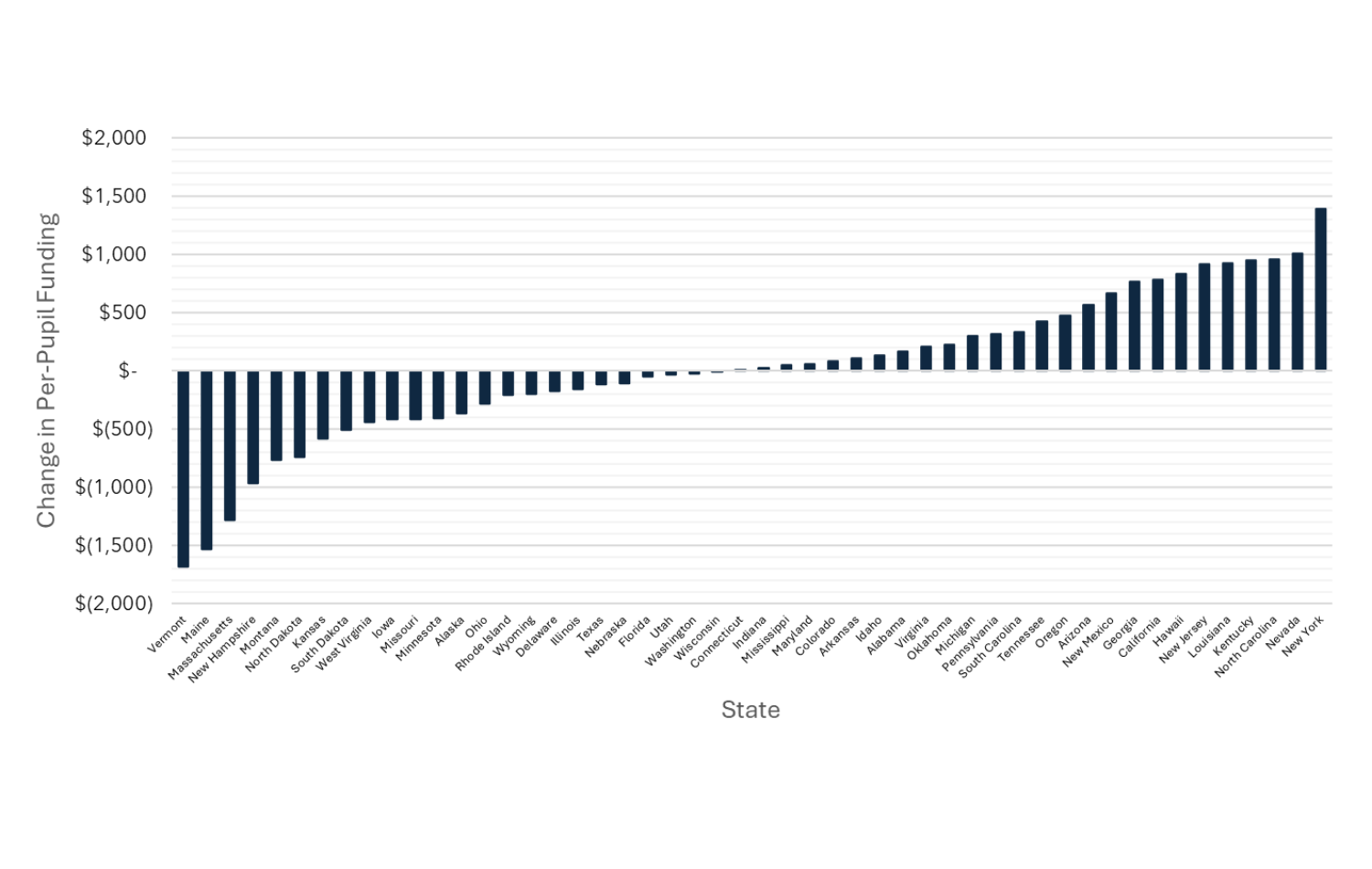In May 2024, the U.S. Census Bureau released its updated fiscal year (FY) 2022 Annual Survey of School System Finances data. Among other things, these data provide further information about the ongoing national budgetary and enrollment impact of the COVID-19 pandemic on K-12 schools and how sources of revenue for districts shifted over the past several years. States, not including the District of Columbia, weathered the initial fiscal crisis of the pandemic in different ways and now face another test as COVID relief funds from the federal government expire in September 2024. What else does the new data show?
Explore the Data: See updated, inflation-adjusted data and learn more about your community’s local, state, and federal education funding and student enrollment from FY08 to FY22 in “Fortifying Funding: An Interactive Bellwether Education Finance Tool.”
Funding for K-12 schools increased in most states from FY20 to FY22.
Updated, FY22 inflation-adjusted data in Bellwether’s interactive education finance tool show that total and per-pupil federal funding increased in most states between FY21 and FY22. However, the increases were notably smaller than those observed between FY20 and FY21. From FY21 to FY22, only 26 states saw a rise in total per-pupil funding, compared to 48 states between FY20 and FY21 (Figure 1). Regarding total funding, 32 states increased during FY21 to FY22, compared to 41 states between FY20 and FY21.
Despite the larger number of states with a decline in total per-pupil funding, overall per-pupil funding from FY20 to FY22 increased for every state except Delaware and Hawaii. This means that even with the per-pupil declines between FY21 and FY22, the increases in FY20 to FY21 offset them.
Figure 1. 26 states saw an increase in total per-pupil funding (local, state, and federal) between FY21 and FY22
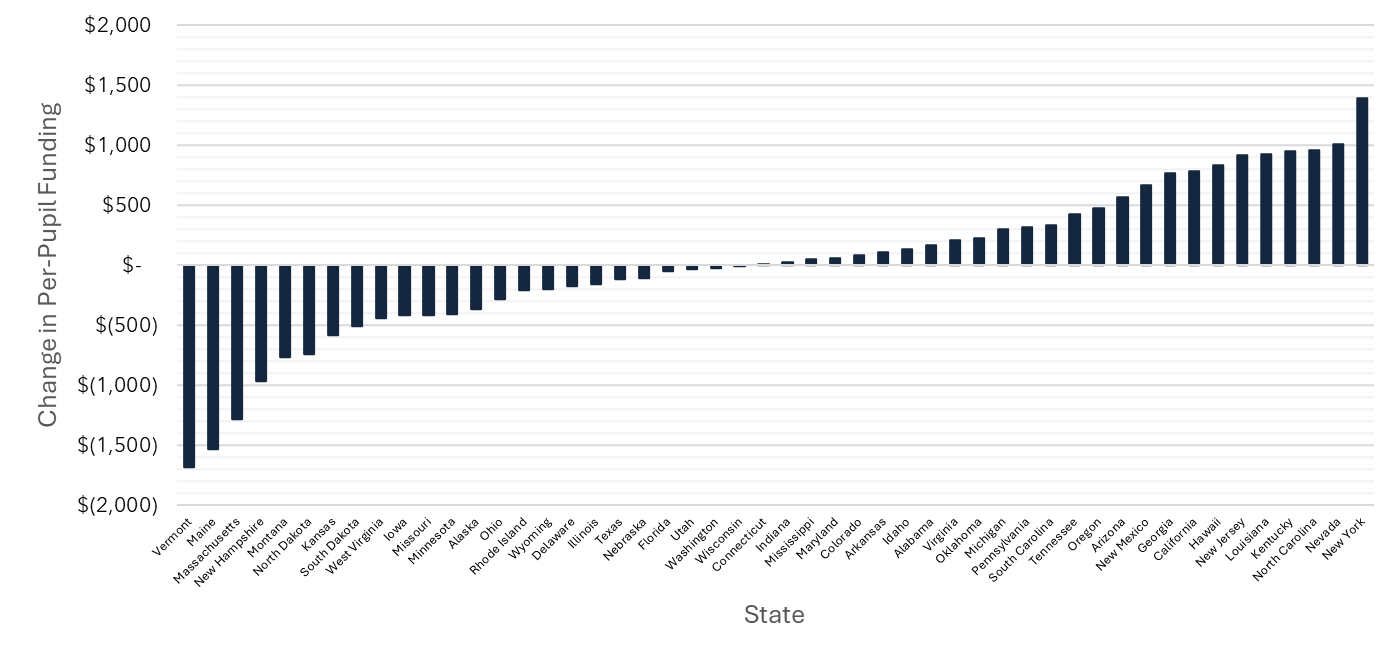
Source: U.S. Census Bureau’s Annual Survey of School System Finances for FY21 and FY22.
Federal funding played a decisive role in driving funding increases.
From FY21 to FY22, all but three states (Colorado, Maine, and Vermont) saw an increase in federal funding per-pupil — and every state except for Colorado and Vermont had an increase in total federal funding (Figure 2). This is attributable to one-time COVID relief funding in the Elementary and Secondary School Emergency Relief Fund (ESSER), distributed largely on the basis of the existing federal Title I formula that allocates funding to students in poverty.
Figure 2. Every state — except for Colorado, Maine, and Vermont — had an increase in federal per-pupil funding from FY21 to FY22
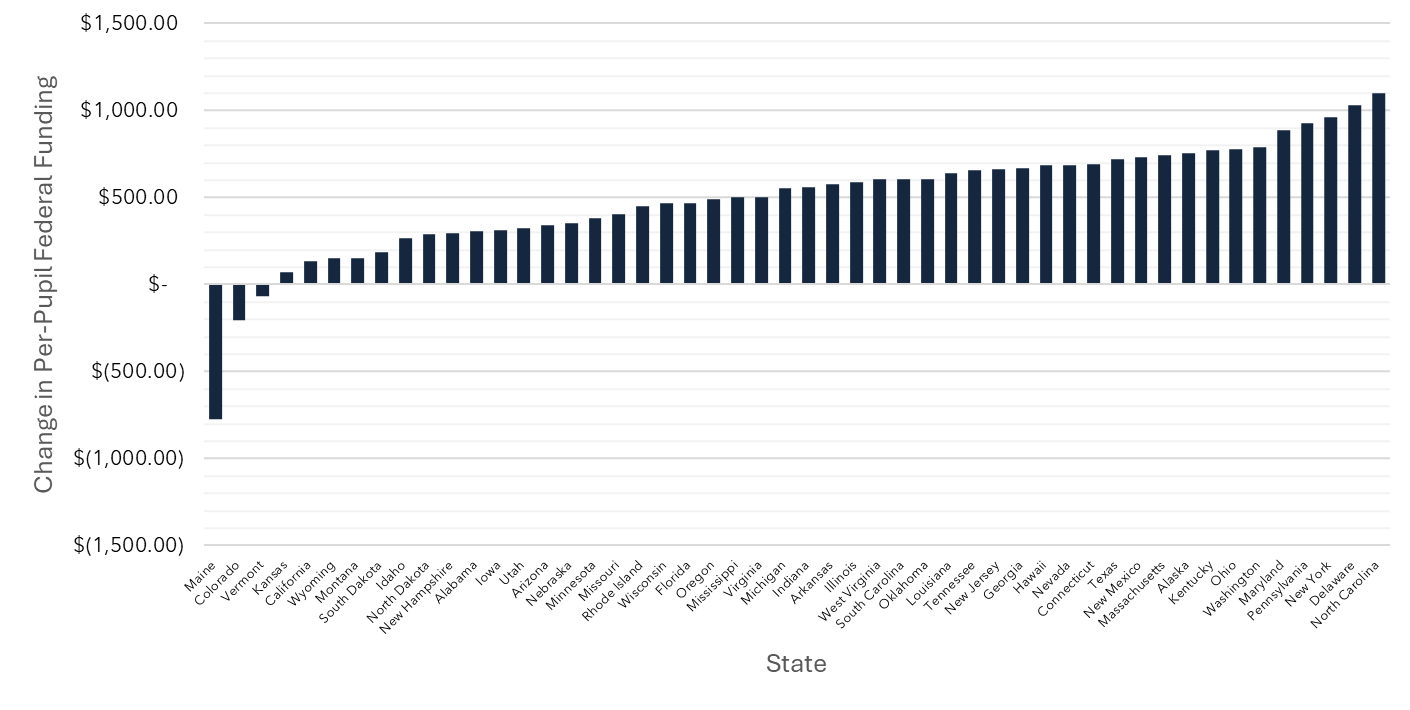
Source: U.S. Census Bureau’s Annual Survey of School System Finances for FY21 and FY22.
State funding declined or stagnated.
From FY21 to FY22, per-pupil state funding flattened or decreased in all but nine states (Figure 3). Only eight states saw a rise in total state funding for K-12 schools during this same time frame. This is much lower than from FY20 to FY21, when 34 states saw a rise in their per-pupil state funding and 18 states had an overall increase in their total state funding. In 26 states, from FY21 to FY22, the federal per-pupil funding increases offset the decline in state per-pupil funding.
Figure 3: 41 states saw a decrease in per-pupil state funding from FY21 to FY22
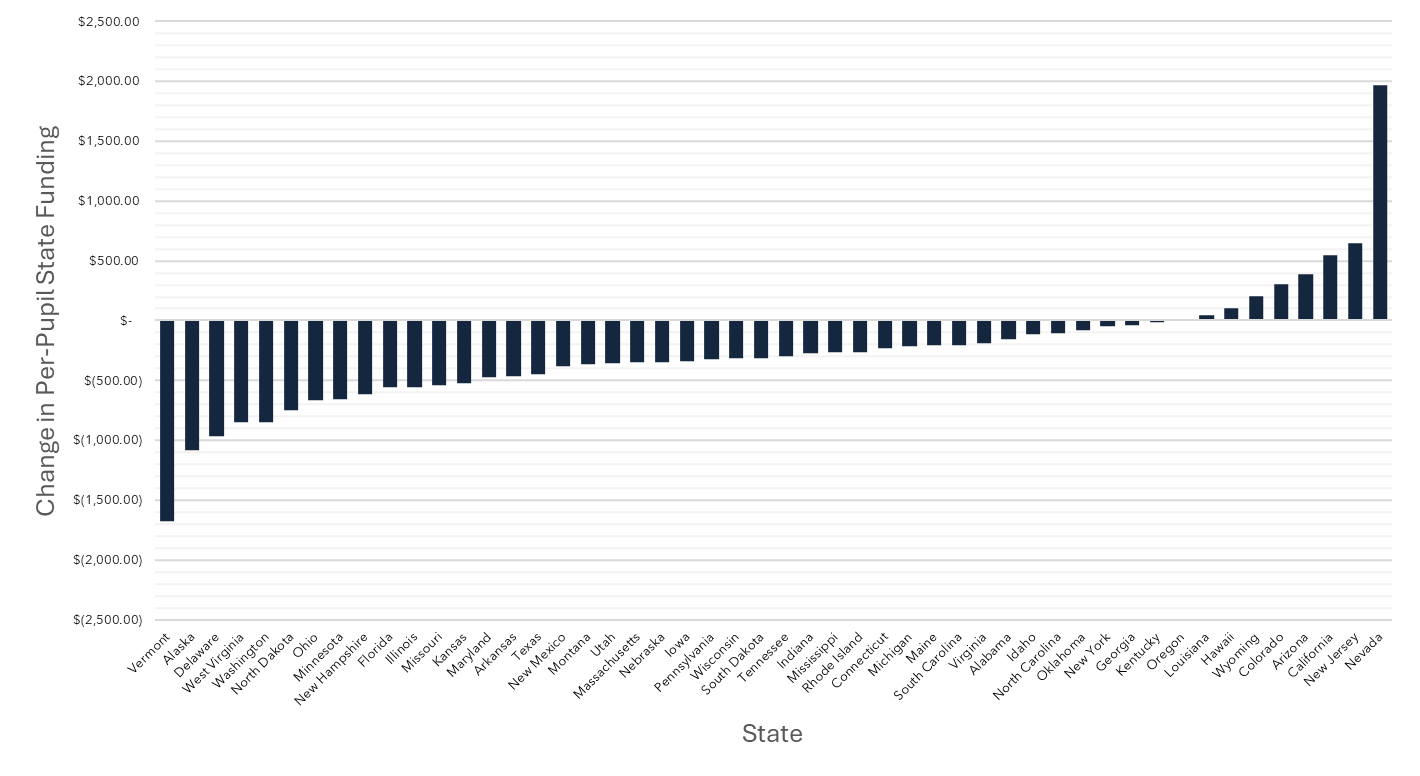
Source: U.S. Census Bureau’s Annual Survey of School System Finances for FY21 and FY22.
K-12 student enrollment (partially) rebounded.
One potential reason for the shift in state per-pupil funding during these two periods is that many states enacted temporary hold harmless policies during the pandemic to mitigate the effects of school closures and remote learning on attendance and enrollment, and every state saw a decline in enrollment in FY20 and FY21. This combination would have bolstered the state per-pupil funding. In contrast, the enrollment declines from FY21 to FY22 were less widespread, with only 19 states experiencing further decreases (Figure 4).
Figure 4: Student enrollment declined in only 19 states between FY21 and FY22
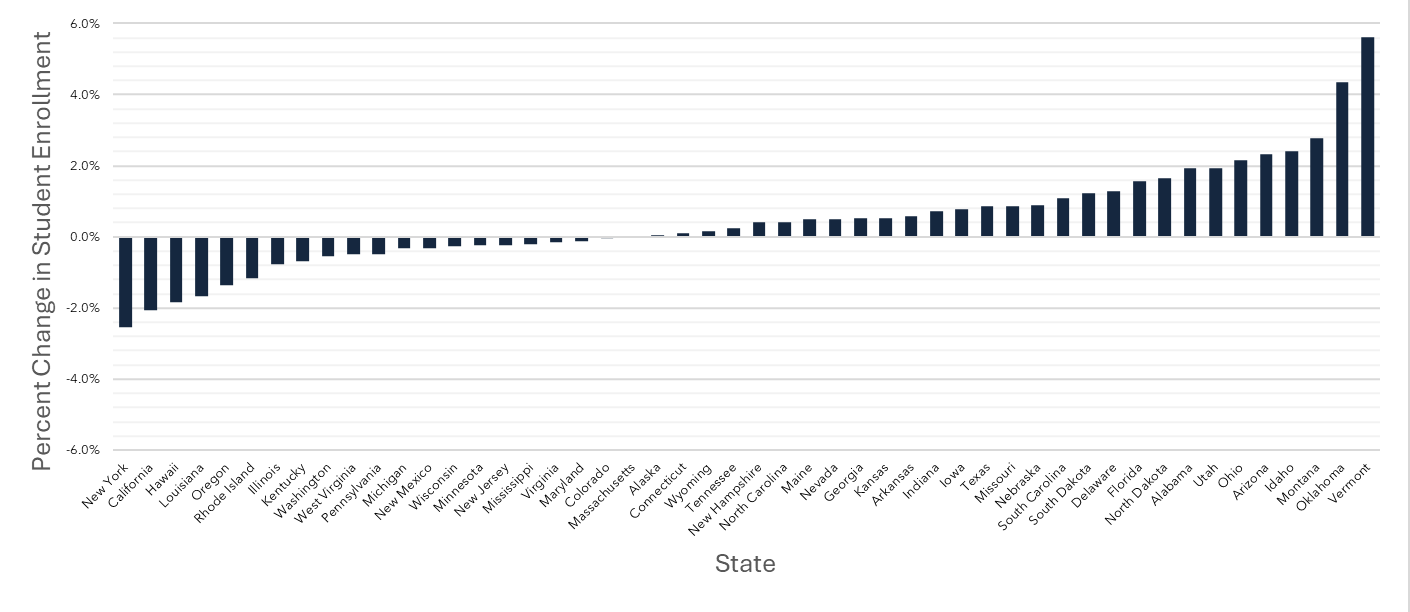
Source: U.S. Census Bureau’s Annual Survey of School System Finances for FY21 and FY22.
What’s ahead for state education funding?
With federal ESSER funding expiring in September 2024, continued declines in birth rates, and enrollment decline projections continuing through at least FY31 for 39 states, districts and states will continue to grapple with enrollment-related budgetary issues.
Shifts in enrollment affect education budgets differently at the state and district levels. When enrollment falls at the state level, or fiscal conditions like inflation and state revenue outlooks change, it does not necessarily translate directly into education cuts. Bellwether’s “Fortifying Funding” report explores several ways policymakers can mitigate and plan for these situations, including diversifying and expanding their revenue streams, avoiding permanent hold harmless policies, and reviewing statewide enrollment trends to support long-term fiscal planning.
As districts and states prepare for the end of federal ESSER funding and potential fiscal challenges due to enrollment declines and staffing pressures, proactive strategies and collaborative efforts will be essential to ensure that educational quality and access remain a priority.
For more on this topic, read Bellwether’s “Fortifying Funding: How States Can Strengthen Education Finance Systems for the Future” report and recommended state policy actions here. And for more on school closure and declining enrollment trends across the country, look for additional analyses from Bellwether in September 2024.
